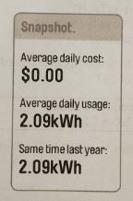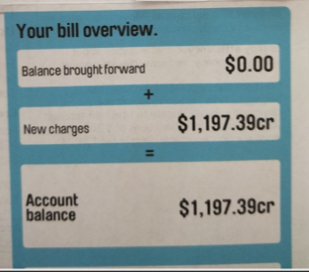by | Jan 24, 2020 | Off Grid Living
There are three major aspects that will impact your energy bill. They are your home’s design, the appliances that you use and the habits that you have developed. If you keep doing the same things you’re going to keep getting the same results. If you want a different result, or more specifically, a more energy efficient home, then changing your practices for the better, until they become habits, is a no-cost solution that can have a major impact on your credit card. Successful people use successful habits to get successful results. There is the best practice solution for every situation and the two factors need to be considered are, what do I need to do to achieve the outcome I want and to what extent am I prepared to modify my behaviour to make that happen. People who drive hard and brake hard in their cars generally don’t enjoy the fuel economy of someone else driving exactly the same car, exactly the same distance exactly the same circumstances. The common denominator that producers either of the outcomes is the way in which the vehicle is operated which is determined by the habits of each individual driver. I have used the term how many miles to the gallon does your house get as a metaphor to the energy efficiency of a home. It does take a while to develop energy efficient habits within the home but once you’ve got them, you can enjoy the advantages without any effort because the behaviour that produces the results that you want happen without you even thinking. If you do discover that you have adopted some not so perfect habits, then you do need to put in a conscious effort until a better practice becomes what you naturally do. Ideally, consistent best practice behaviour would be your objective. Looking at the first photograph is a snapshot of our household’s electricity consumption over a 3 month period ending in early January 2020. Because we export more energy than we consume, our average daily cost is zero. Our average daily electricity consumption over this period of time is reportedly 2.09 kilowatt hours. Because there are two components to be considered in this equation this data is quite misleading. In fact we use about 6 kilowatt hours per day. The 2.09 kilowatt hours component of the electricity we consume represents only the electricity that we pull from the grid after sun has gone down. The second component is the electricity that we use through the day which our solar panel supply and that generally averages around 4 kilowatt hours per day. We consistently use less than half or even one third of the amount of electricity of similar households. We have a solar hot water system and we do cook with gas so our biggest electrical consumer is our refrigerator, which, under the right circumstances can consume as little as 600 watt hours per night. You can see that we consume a little more than 3 times that amount because, although our refrigerator lives in an ideal environment with an ambient temperature limiting to 23 degrees, we do open the door occasionally. We also use lights and may watch a small amount of television from time to time. Could we be more energy efficient? Yes we probably could. In fact, because we are on a high export tariff, exporting more solar energy through the day and consuming more electricity during the night, that is, washing clothes ironing and vacuuming, would be in our best interest. We have consciously develop habits that best suit our energy efficient lifestyle. We make compromises in some areas and not in others and because we consistently do what we have always done we continue to get the results that we have always got.
I have used the term how many miles to the gallon does your house get as a metaphor to the energy efficiency of a home. It does take a while to develop energy efficient habits within the home but once you’ve got them, you can enjoy the advantages without any effort because the behaviour that produces the results that you want happen without you even thinking. If you do discover that you have adopted some not so perfect habits, then you do need to put in a conscious effort until a better practice becomes what you naturally do. Ideally, consistent best practice behaviour would be your objective. Looking at the first photograph is a snapshot of our household’s electricity consumption over a 3 month period ending in early January 2020. Because we export more energy than we consume, our average daily cost is zero. Our average daily electricity consumption over this period of time is reportedly 2.09 kilowatt hours. Because there are two components to be considered in this equation this data is quite misleading. In fact we use about 6 kilowatt hours per day. The 2.09 kilowatt hours component of the electricity we consume represents only the electricity that we pull from the grid after sun has gone down. The second component is the electricity that we use through the day which our solar panel supply and that generally averages around 4 kilowatt hours per day. We consistently use less than half or even one third of the amount of electricity of similar households. We have a solar hot water system and we do cook with gas so our biggest electrical consumer is our refrigerator, which, under the right circumstances can consume as little as 600 watt hours per night. You can see that we consume a little more than 3 times that amount because, although our refrigerator lives in an ideal environment with an ambient temperature limiting to 23 degrees, we do open the door occasionally. We also use lights and may watch a small amount of television from time to time. Could we be more energy efficient? Yes we probably could. In fact, because we are on a high export tariff, exporting more solar energy through the day and consuming more electricity during the night, that is, washing clothes ironing and vacuuming, would be in our best interest. We have consciously develop habits that best suit our energy efficient lifestyle. We make compromises in some areas and not in others and because we consistently do what we have always done we continue to get the results that we have always got.  The amount of electricity that we have drawn from the grid over this period of time is exactly the same, even to the accuracy of two decimal places, as it was during the same period last year. That happens because we have consistent habits. The amount of money that was deposited into account over the same period of time is also the same as what it was last year. Last year we generated $1178 and this year, for the same seasonal period, we generated and exported $1197. There is only $11 in it. That’s consistency.
The amount of electricity that we have drawn from the grid over this period of time is exactly the same, even to the accuracy of two decimal places, as it was during the same period last year. That happens because we have consistent habits. The amount of money that was deposited into account over the same period of time is also the same as what it was last year. Last year we generated $1178 and this year, for the same seasonal period, we generated and exported $1197. There is only $11 in it. That’s consistency.
At the various talks I do on home energy efficiency within the community, I frequently say “to get a results that we get, you need to do what we do”.
Am I happy that we consistently get these results? Why yes I am.
For you to benefit as we do simply modify you’ll behaviour to get the outcome that you want.
John Lynn
